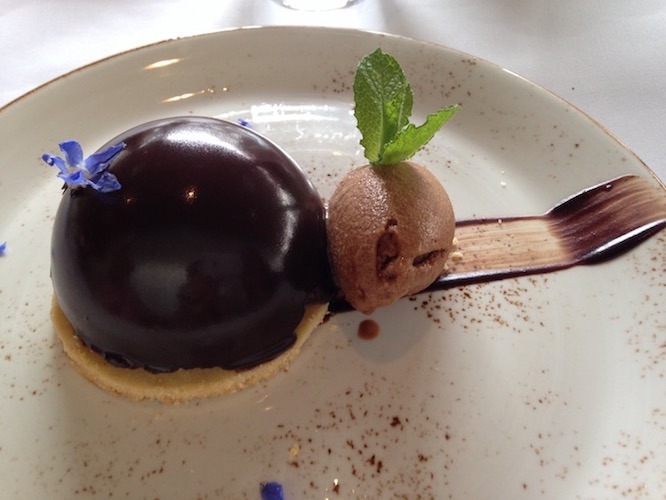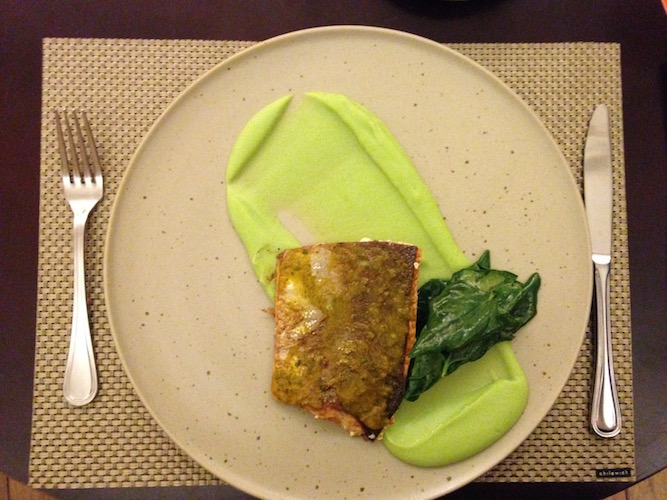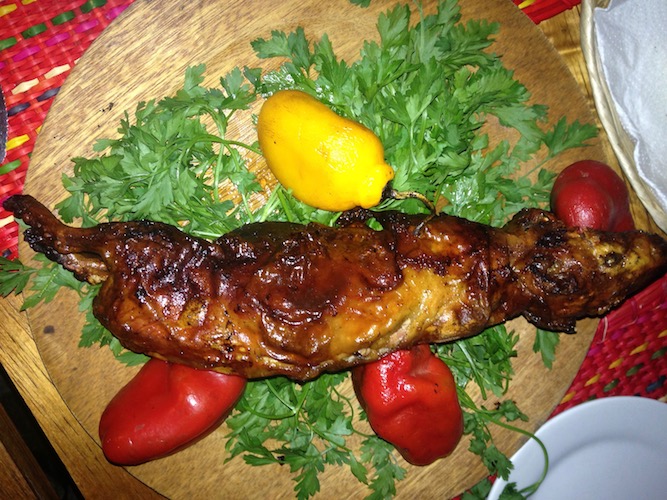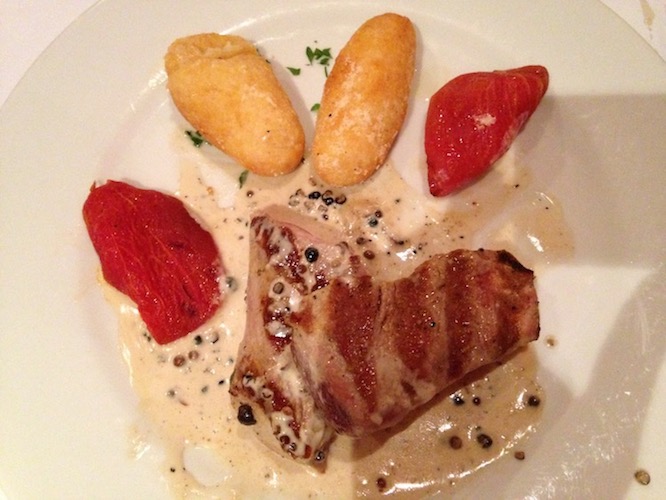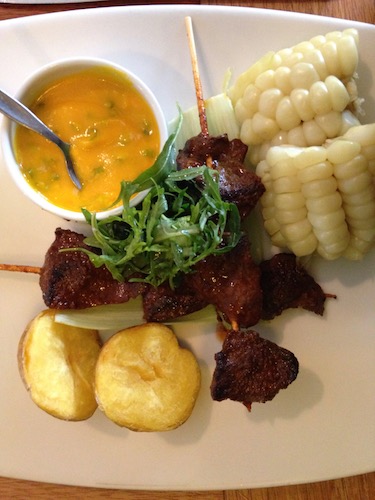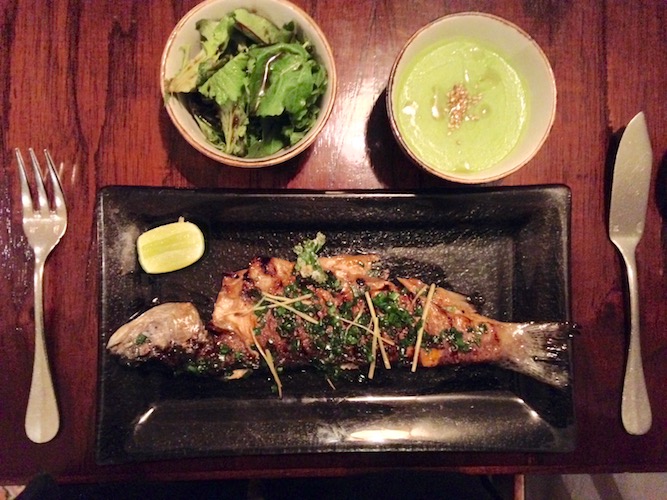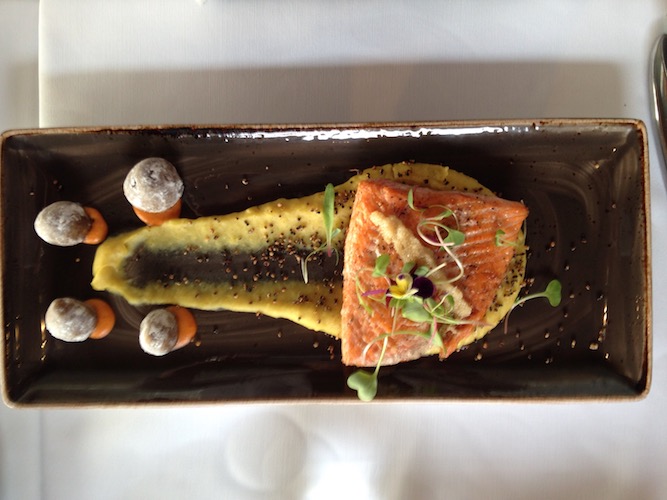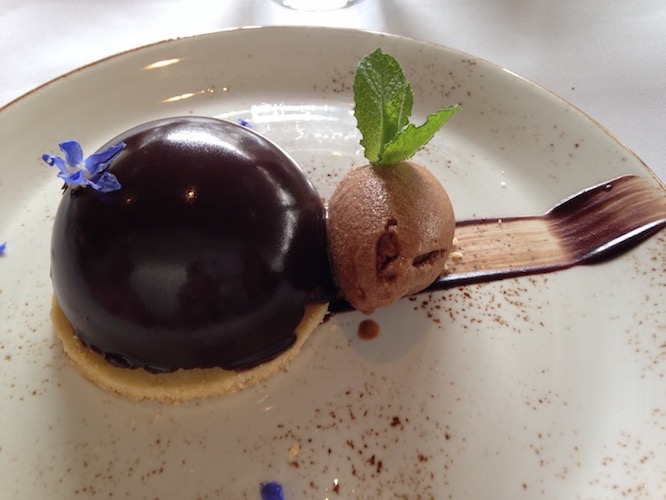Guinea Pig, Alpaca, And Kiwicha: Are You Daring Enough For New Andean Cuisine?
Heading to the legendary Inca citadel of Machu Picchu? You're in for a treat — but not just for the reason you think. You'll experience a dining scene as astonishing and unique as those iconic ruins in the 11,152-foot-high gateway city of Cusco nearby.
Boasting a mind-boggling 3,500 varieties of potatoes, 300 types of corn and 55 different peppers, and giving birth to such ancient nutrient-dense superfoods as quinoa, canihua and kiwicha (also known as amaranth), the Peruvian Andes have forged a dynamic gastronomy all their own. And it's on full mouth-watering display in Cusco.
From New Andean Cuisine — a fusion of traditional ingredients with modern techniques — to millennia-old dishes, here are six great dining spots in Cusco to experience this distinctive Andean culinary culture.
Chicha
Chicha is the Cusco outpost of Peru's acclaimed celeb chef Gastón Acurio who helped put Peru on the international dining map with his award-winning Lima restaurant, Astrid y Gastón. Can't afford the Andean-high prices of his Lima flagship? This is a more down-to-earth alternative offering a new twist on Peruvian classics.
Named for the ancient corn beer of the Incas, the minimalist dining room is located on the second floor of a whitewashed colonial building on a quiet plaza. Ocher walls, sleek black tables, and chairs and polished wood floors set a modern, stylish tone, enhanced by soft Andean music.
Sourcing all its ingredients from local valleys, rivers, and lakes, Chicha pays tribute to Cusco's thousand-year-old-culinary heritage with dishes such as the fabulous grilled trout, served crispy skin up on a bed of wilted Andean seaweed with brown butter sauce and broad bean puree. Don't skip the white corn or yellow potato rolls slathered with pepper- and cilantro-flavored butter. Innovative twists on Inca ingredients include Peking duck-style guinea pig, alpaca tartare, octopus served over a variety of potatoes, and pizza topped with — what else —alpaca carpaccio. New Andean, indeed!
Pacha Papa
You can't get more traditional than Pacha Papa, an open-air cobblestoned courtyard in a traditional colonial building in the boho San Blas neighborhood. The rustic setting provides the perfect ambience to sample Peruvian classics. This is the place to try cuy, roasted guinea pig seasoned with local herbs and peppers and served whole with a red pepper stuffed in its mouth. Click a quick Insta-shot of your #bigfurryrat on a plate before your server whisks it to the kitchen to be — thankfully — carved. The flavor is a cross between duck and pork, but in truth, there's precious little meat on those tiny bones.
Ease onto wooden benches under oversized umbrellas, warmed by outdoor heaters and an enormous wood-fired oven. While a traditional Andean harpist plucks his haunting sounds, try local specialties such as pacha choclitos, giant corn kernels drenched in herb-spice butter; chicharrón, deep-fried pork cracklings served with fried potatoes and toasted chulpe corn; and marinated alpaca brochette with stuffed hot pepper, corn tamal, potatoes, and grilled Andean cheese. Polish off your foray into the land of the Incas with a quinoa wafer filled with warm kiwicha milk pudding (like a crunchy, creamy rice pudding) served with ice cream and pisco-flambéed local gooseberries. A sweeter medley of superfoods you won't find.
Cicciolina
Being named Cusco's best restaurant for 2017 by the annual Summum Contest raises expectations, to be sure. But dining in this hip restaurant-cum-tapas bar on the second floor of a colonial house doesn't disappoint. The aromas from the open kitchen draw you through the lively tapas area, festooned with giant garlands of hanging garlic and chili peppers. Deep crimson walls set off crisp white tablecloths and dark wood beams in the high vaulted ceiling. Settle into a comfy high-back leather seat or banquette in the intimate dining room and nibble tasty pan campesino, or country bread, served with olives and tomato dipping sauce while you wait for your meal.
For Andean specialties with a twist, start with a classic causa, a native mashed yellow potato terrine, prepared here in towering layers with yellow chilies, deboned guinea pig confit and caramelized apples. As filling and tasty as it is, don't skip the alpaca steak (tastes like beef) with a divine creamy four pepper sauce, served with crispy yucca soufflé and roasted tomatoes. Order it medium rare; lean alpaca meat (no cholesterol!) can get tough if overdone. Alpaca, guinea pig, and causa: It doesn't get more Andean than that.
Inka Grill
Want to go local for lunch? Try the casual Inka Grill right on the gorgeous Plaza de Armas, the heart of Cusco. Sip a refreshing chicha morada, a traditional purple corn drink made with key lime and sugar, as you peruse a menu heavy on traditional favorites.
Start with a beloved Peruvian street food, anticuchos, or skewered beef hearts. The meat is rich and intense, nicely balanced with bland corn and roasted yellow potatoes with mild yellow chili sauce. Follow with Peru's version of comfort food: aji de gallina, one of the country's most popular dishes. Shredded poached chicken swims in a creamy nut and parmesan sauce, spiced with mirasol chili peppers and accompanied by white rice, yellow potatoes, and hard-boiled eggs. If you still have room, try an old-school Peruvian dessert called ponderación, delicate crispy biscuit spirals perched on a tangy soursop sauce with vanilla ice cream on the side. The perfect sweet treat to end your meal.
Limo
Overlooking the picture-perfect colonial Plaza de Armas, Limo is ground zero for Japanese-Peruvian fusion — with a pisco bar, to boot. Its second-story window-lined dining terrace boasts priceless views across the square to the city's twinkling lights climbing the hillsides beyond. There's no better spot to enjoy Peru's native specialty, ceviche, as well as sushi and tiradito (Peruvian sashimi), all starring the country's bountiful seafood, of course.
Japan meets Peru in an explosion of flavors here. Let me count the ways: Scrumptious Asian-style ceviche pairs marinated tuna with avocado, Japanese cucumber, pickled ginger, soy sauce, sesame seeds and onions, topped with crispy wontons. Traditional mashed-potato causa becomes Asianized with miso-marinated grilled line fish. Sushi rolls go local with Andean peppers. Crispy teriyaki prawns are matched with sautéed quinoa and shitake mushrooms. Even ramen becomes Peruvian with potato and quinoa noodles. And whole trout, grilled with Andean herbs and Japanese shoyu, sits atop wasabi-infused potato puree sprinkled with sesame seeds. Bet the Incas never ate their spuds with that!
MAP Café
Haute cuisine and ancient culture combine in this jewel of a restaurant, set in a glass-encased room in the cobblestoned outdoor courtyard of the Museum of Pre-Columbian Art. Sophisticated and sleek, MAP Café serves up gourmet fusion every bit as artistic as the museum displays.
Don't pass up the signature dish, capchi de setas. The café's answer to French onion soup, it's a creamy Andean mushroom soup topped with a flaky pastry crust and crispy black quinoa — a lip-smacking marvel of flavors and textures. Seared trout, topped with its own roe, comes dressed with three-corn purée, kiwicha, salty black potatoes and hot pepper sauce. Pasta dishes are equally inventive and delicious: quinoa cannelloni perfumed with truffle and corn ravioli filled with veal cheek and creamy corn and yellow pepper.
Have a sweet tooth? Indulge in the work-of-art desserts, such as "lucuma kisses in five textures" — liquid, creamy, foamy, and powdery under a hard chocolate shell. This giant chocolate bomb is filled with multiple layers of chocolate decadence sitting on a crunchy biscuit accompanied with a scoop of coffee-flavored chocolate sorbet. Inca royalty never had it this good.
Bonus: Marcelo Batata Cooking Class
Want to dig deeper? Sign up for a half-day Marcelo Batata Cooking Class, affiliated with the Marcelo Batata restaurant. There's no better entrée into Peru's rich culinary heritage.
You'll learn to make classic ceviche; traditional lomo saltado, a beloved beef stir fry served with fried potatoes; and pisco sour with Peru's signature white grape brandy — well-shaken, not stirred. You'll also sample a variety of exotic and tantalizing fruits (aguaymanto, maracuya, carambola and lucuma, anyone?).
Along the way, English-speaking instructor Elvira Perez Pacheco explains why the country's unique geography and history have created such diverse and original food.
"From sea level to 23,000 feet, from coastal deserts to highlands, there are lots of different altitudes and micro-climates, which produce amazing biodiversity," she says. "Our geography gives our food more intense flavor. So fruit will be sweeter or more sour."
"We have two ocean currents: El Niño and the Humboldt Current," she adds. "They produce a lot of plankton, which produces hundreds of species of fish and seafood."
That incredible bounty has merged with waves of immigrants — Chinese, Japanese, Africans and Europeans —who have added their own ingredients, techniques, and flavors to the exciting melting pot that is Peruvian cuisine today.
The meals that are the subject of this review were provided at no cost to the contributor.
